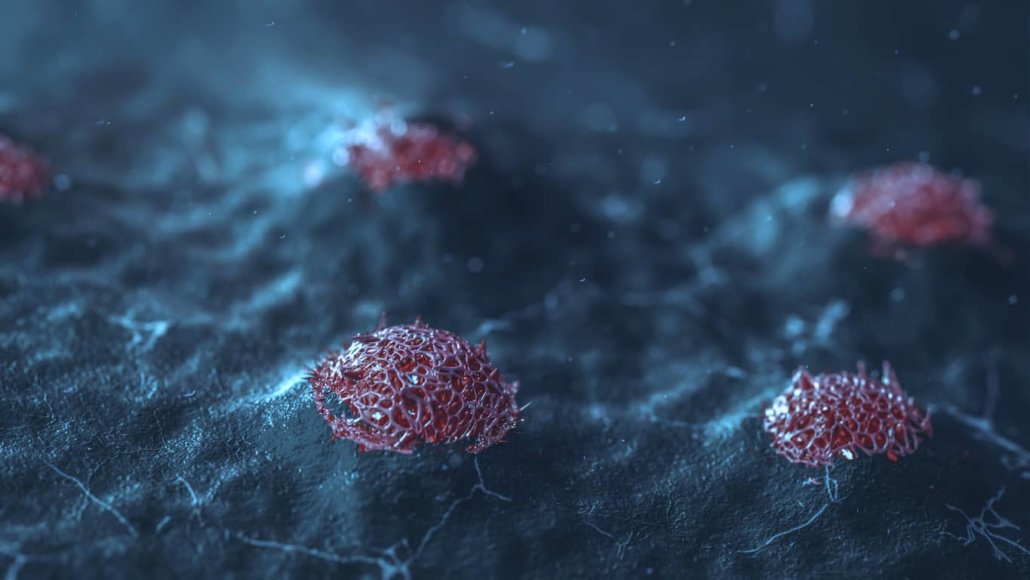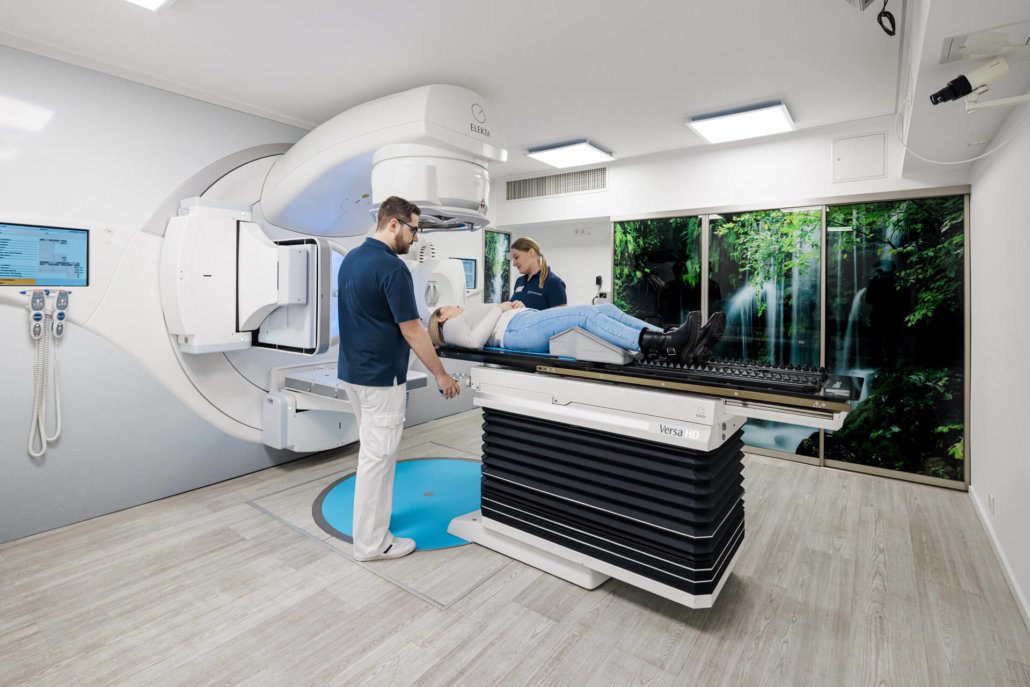Lung metastases – multiple causes
Pulmonary metastases result from the spread of individual cancer cells from the primary tumor via the blood or lymph. At the beginning, symptoms rarely occur; only in advanced stages can symptoms such as shortness of breath, cough or chest pain indicate daughter tumors (metastases) in the lungs. Metastases to the lung occur mainly as a result of advanced stages of cancer in the skin, breast, kidney, pancreas, intestine or body tissue (sarcoma). Other cancers can also spread to the lungs.
at approx. 35 – 40
of all tumor diseases develop lung metastases
Primary tumors
are mostly renal cell, colon, rectal, testicular, bone or soft tissue tumors
Source: LMU Hospital
Where can you have radiotherapy for lung metastases in Munich?
Metastases in the lungs have a variety of causes. The attending physician can only choose the optimal therapy if the primary tumour has been assigned without doubt. After that, various methods are available – including treatment by radiation of the lung metastases. Radiation therapy for lung metastases is also called radiosurgery. In just a few sessions, our radiotherapists treat the metastases with a high single dose very precisely and virtually without collateral damage. Our specialists will draw up the necessary individual treatment plan together with you and the doctors treating you.

Before radiation – find lung metastases!
Before treatment, of course, there is no doubt about the diagnosis. Lung CTs or PETCTs are usually performed regularly as part of the diagnosis of the spread of previously diagnosed cancer, or as part of the follow-up of cancer. In individual cases, it is necessary to confirm the diagnosis by means of a CT-supported tissue sampling (biopsy).
How are lung metastases treated?
Metastases in the lungs are scattered tissue cells from the main tumor. In addition to the location, number and size of the metastases, the stage of the disease and the patient’s general condition also play a decisive role in the choice of therapy.
Radiotherapy
If surgery is not possible or too risky, or if it is not an option for the patient, radiotherapy can be an alternative. In particular, stereotactic radiotherapy/radiosurgery, in which intense beams are focused on a single metastasis, promises results similar to surgery in certain cases. In addition, this precise irradiation technique leaves the surrounding healthy tissue largely undamaged.
Operation
Surgery is most useful when all tumor metastases in the lungs can be completely removed. Depending on the location and number of metastatic lesions, minimally invasive, tissue-sparing surgery using a surgical laser may be sufficient at best to completely remove the growths in the lung. In certain cases, repeated surgery is possible.
Chemotherapy
Similar to neoadjuvant radiotherapy, chemotherapy prior to surgery can also help create better conditions for surgery by shrinking metastases or reducing their number. Chemotherapy may also be used after surgery in certain cases to increase the chances of recovery. By disrupting the growth of rapidly dividing cells, proliferation in the body can be slowed.
Other local ablative procedures
As an alternative to surgery or radiotherapy, other local ablative procedures can also be used, such as radiofrequency ablation of the metastases by our radiologists.
Alternative treatment methods
For some patients, depending on the main tumour, the spread of the metastases and their general condition, alternative forms of therapy may also be considered. Targeted therapy involves the use of drugs that interfere with the metabolism of the degenerate cells. Anti-hormone therapy is used for metastases whose main tumor growth is dependent on hormones (e.g.: breast cancer).
What is the treatment process in our practices?
What do you need to pay attention to before, during and after treatment?
Metastases usually occur at an advanced stage of cancer, so regular checks are enormously important. During these follow-up examinations, imaging techniques, such as a CT scan, PETCT and/or MRI, provide information about the possible spread of the cancer or metastases in the body.
Additional examinations and discussions with the patient convey to the physician what the patient’s general health status is. Due to regular follow-up, a relapse (recurrence) can be detected quickly so that the new situation can be responded to quickly and efficiently.
Please inform your doctor immediately as soon as your condition worsens or possible side effects become a burden. Together with your doctor, you can work out solutions to relieve side effects such as pain or discomfort and thus improve your quality of life.
What are the side effects of lung metastases treatment?
Despite an individual treatment plan that treats the metastases in the best possible way, side effects may occur during and after treatment. Operations are always associated with a certain risk. Surgical procedures, including minimally invasive methods, can cause damage to the lungs and cause pain. Wound healing disorders as well as infections (e.g. pneumonia) and breathing difficulties may also occur.
After radiation therapy, small scars may appear in the treated area in the lungs that usually do not require treatment. Depending on whether the esophagus or the lung tissue was irradiated, temporary swallowing difficulties or lung tissue inflammation may also be observed, which can be treated with medication.
Chemotherapy affects the growth of rapidly dividing cells, both healthy and diseased. For this reason, cytostatic drugs also affect the hematopoietic system and the formation of skin and mucosal cells. Therefore, patients are often tired, have reduced immune defenses, they suffer from hair loss and inflammation.
Side effects can also be observed in the context of alternative treatment methods. These include lower immune defenses or skin and mucous membrane irritations.




